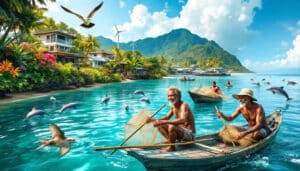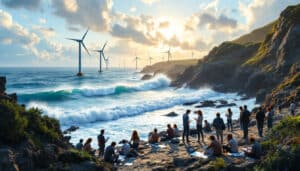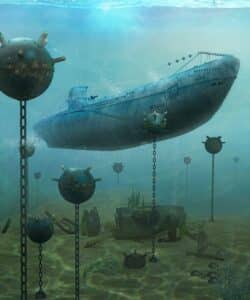Coastal communities play a crucial role in our ecosystem in 2025, both through their cultural influence and their economic importance. Located at the crossroads of the world’s major maritime routes, they are essential catalysts for social and commercial exchanges, while carrying the age-old traditions of their inhabitants. However, these regions are also on the front lines facing environmental challenges, particularly climate change and erosion. In this context, understanding their dynamism and particularities is essential to grasping global ecological issues. Let us explore what truly underlies the essence of coastal areas and their enduring impact on our planet.
Table of Contents
ToggleThe historical influence of coastal areas on cultural exchanges
Since antiquity, coastal areas have been the theater of intense cultural exchanges, shaping entire civilizations. As vectors of meeting between peoples and ideas, they serve as bridges between continents. The maritime routes along the coastlines have allowed great civilizations, such as those of the Mediterranean and West Africa, to spread their cultural and economic influences across the world.
Maritime resources are one of the main reasons why coastal areas have become hubs of wealth and cultural diversity. Not only have they facilitated the development of unique fishing and craft practices, but they have also influenced local culinary traditions. In Southeast Asia, for example, fishing is as much an economic activity as it is a central element of community rituals.
Cultural fusions and trade routes
Over the centuries, maritime exchanges have allowed for an exceptional diversity of cultural fusions. Goods of all kinds have circulated along coastal routes, introducing new practices and enriching local cultures. The Mediterranean is a striking example, illustrating how different civilizations have been able to enrich their mutual cultural heritage.

Migrations, historically facilitated by maritime expanses, have accentuated this cultural mixture. Population movements have added complexity and richness to local cultures, creating dynamic cultural identities. Coastal areas, therefore, have not only influenced economic dynamics but have also served as basins of cultural diversity.
- Exchanges of products and ideas
- The economic integration of coastlines
- Coastal urbanization
- The preservation of cultural identities
How do communities continue to adapt to these varied influences while preserving their unique identity? The introduction of modern practices and contemporary socio-economic issues compel these regions to maintain a delicate balance between tradition and innovation.
Environmental challenges in coastal areas
Environmental challenges threaten many aspects of coastal life. Erosion, climate change, and rising waters are major concerns for communities located by the sea. The vulnerability of these regions to natural phenomena requires particular attention from local and international authorities.
Impact of climate change on local cultures
Climate changes profoundly alter the daily lives of coastal areas. Recent years have seen an increase in extreme weather events, such as tsunamis and storms, which directly threaten human habitats and the food security of populations. Measures for marine conservation are crucial to mitigate some of these impacts.
In this context, initiatives such as those from PêcheDurable make perfect sense, ensuring continuous access to marine food resources while preserving biodiversity. Traditional fishing practices are often the most sustainable due to their low ecological footprint and respectful approach to natural cycles.
Some solutions include the restoration of mangroves, which play a crucial role in protecting coastlines against erosion and flooding. Citizen initiatives are developing to promote this approach, such as the campaign from CôtePropre that emphasizes the preservation of fragile ecosystems.
| Challenges | Solutions | Success Examples |
|---|---|---|
| Coastal erosion | Restoration of mangroves | Projects in Southeast Asia |
| Marine pollution | Community clean-up initiatives | Lausanne in Switzerland |
| Climate changes | Adaptations from PêcheDurable | Communities in the North Sea |
Innovation and creativity in coastal areas
Coastal areas are often seen as hubs of innovation and creativity. Whether through craftsmanship, cultural tourism, or new technologies, the possibilities are endless for regions located by the sea. The transition to sustainable practices offers many opportunities to enhance local resources while contributing to the economic prosperity of these regions.
Cultural tourism and land use planning
Coastal communities are rich in their cultural heritage. By emphasizing traditional craftsmanship, such as boat building and shell carving, they attract many visitors each year. Cultural tourism offers a viable economic alternative for struggling coastal regions while reinforcing their local identity.
Initiatives like MarineConserve encourage the development of historical sites to highlight local patrimonial riches. Sustainable development and culture are thus linked to promote a positive image of coastal areas.
- Creation of eco-museums showcasing maritime heritage
- Organization of festivals around maritime traditions
- Development of tourist circuits dedicated to natural heritage
The technological revolution does not spare these regions either. Thanks to advances such as 3D printing and other innovations, new methods of preserving and enhancing the marine environment are emerging. These technologies promote eco-responsible production and pave the way for sustainable management of natural resources.
The political issues of coastal areas
In 2025, coastal areas are at the center of numerous political discussions. Coastal management policies have become crucial for states seeking to maximize their maritime potential while ensuring the sustainability of these regions. The issue of equity and social justice is also at the core of debates, especially for communities that are often marginalized.
Social justice and strengthening resilience
Social injustices are particularly problematic in coastal regions, where local populations often feel excluded from major political decisions. The blue justice movement highlights these issues by calling for active inclusion of the affected populations in decision-making processes. Developing maritime and coastal policies that take into account past injustices has thus become crucial.
In this perspective, implementing agencies seek to enhance the resilience of coastal communities by using participatory approaches. By encouraging the participation of local actors and favoring inclusive partnerships, management strategies are better adapted to the specific needs of each region.
| Issues | Examples of initiatives | Expected outcomes |
|---|---|---|
| Equity in political decisions | Blue justice movement | Inclusion of communities |
| Resilience to natural disasters | Community emergency projects | Better preparedness and response |
| Education and awareness | Participatory workshops | Increased awareness of coastal issues |
Coastal areas are therefore at a crossroads between preserving their cultural, economic, and environmental diversity. As these regions continue to adapt to contemporary challenges, they are defining new avenues for integrated community development that respects the EarthMarine.








